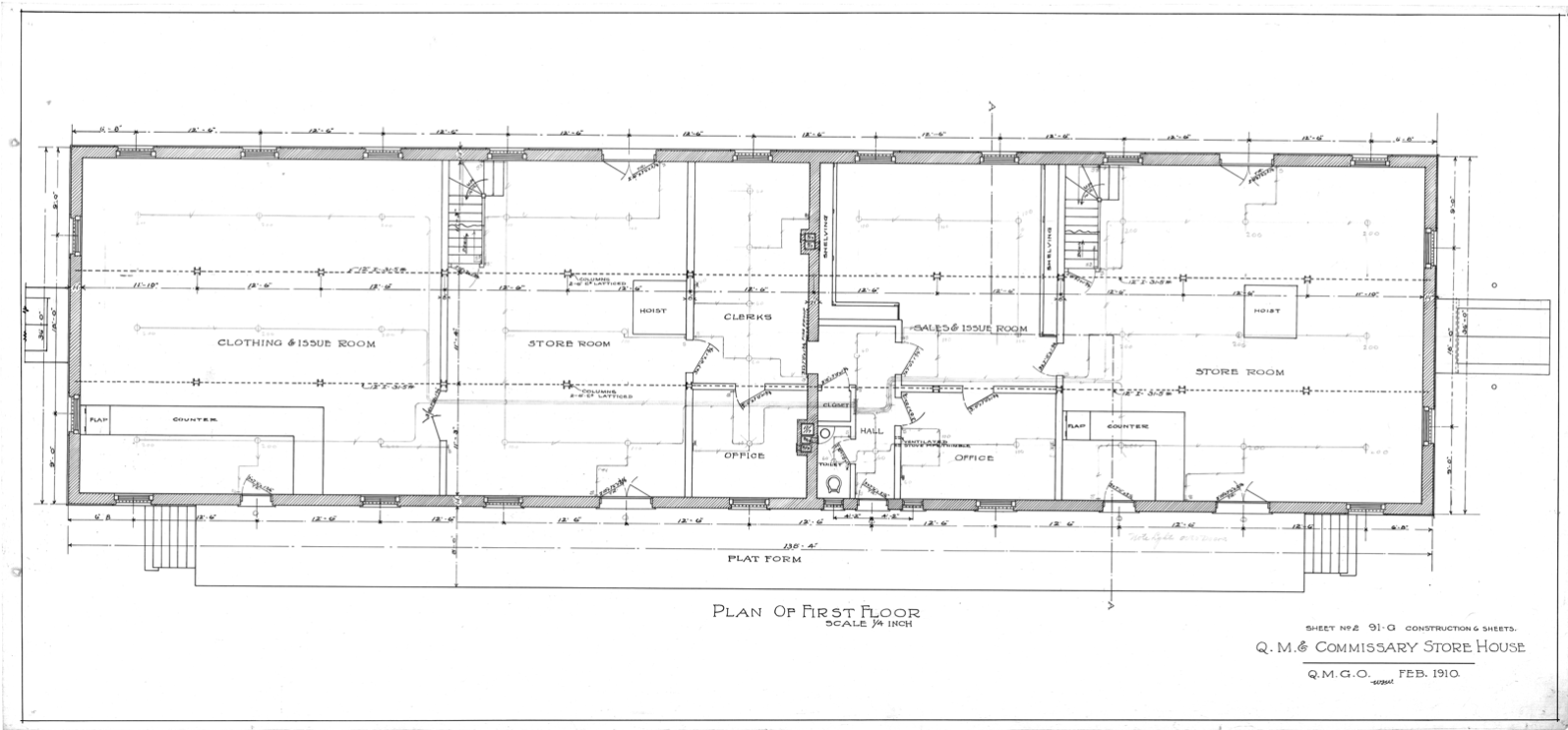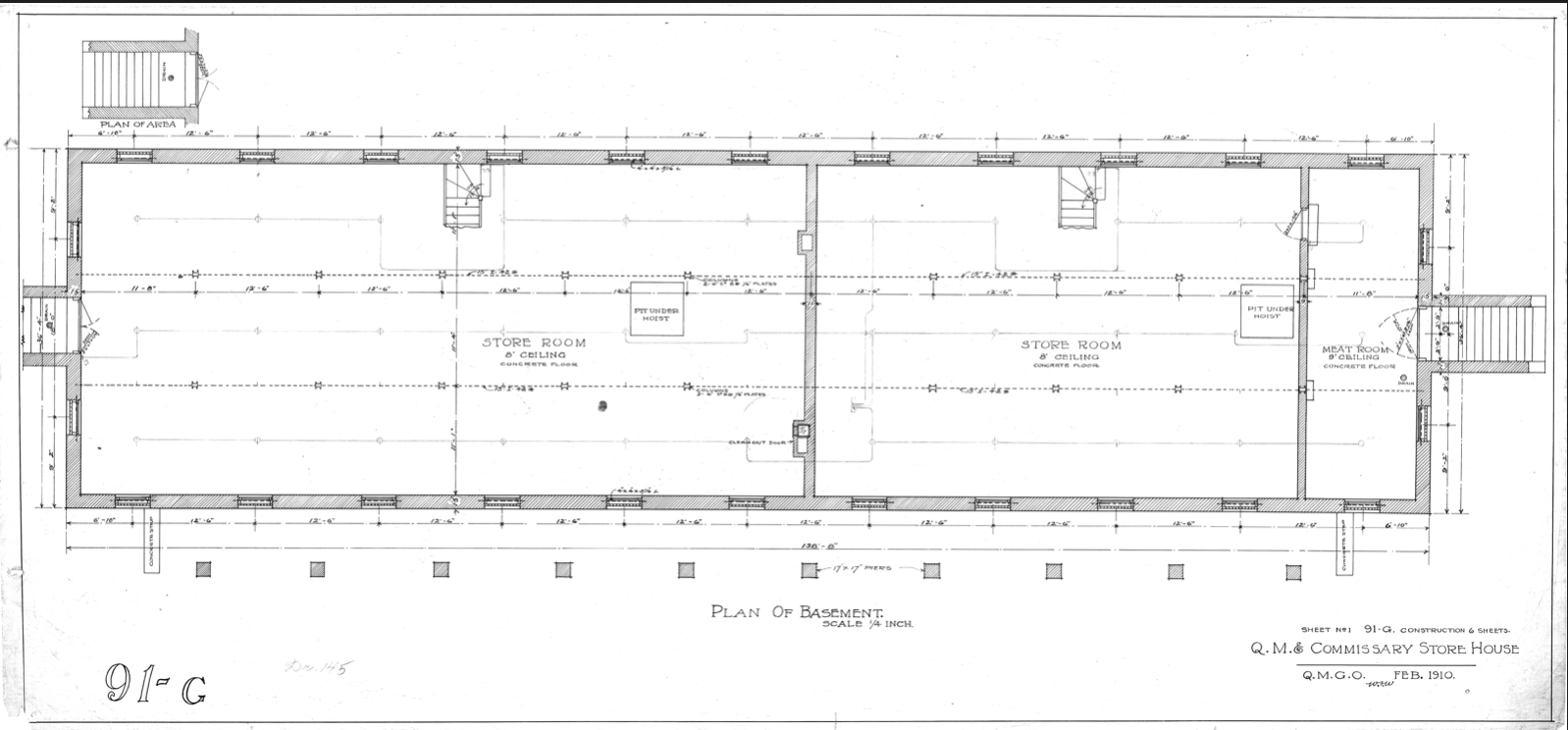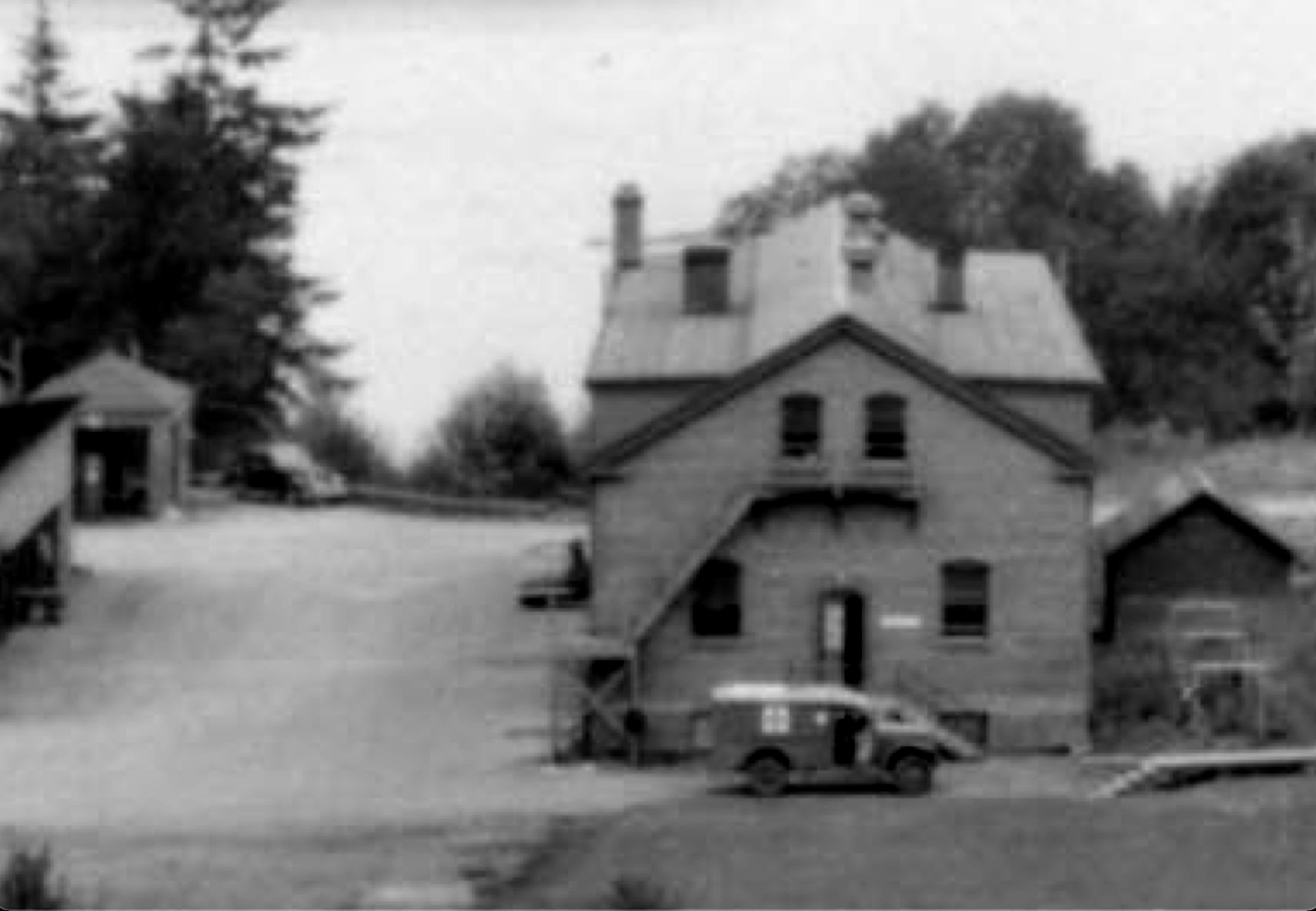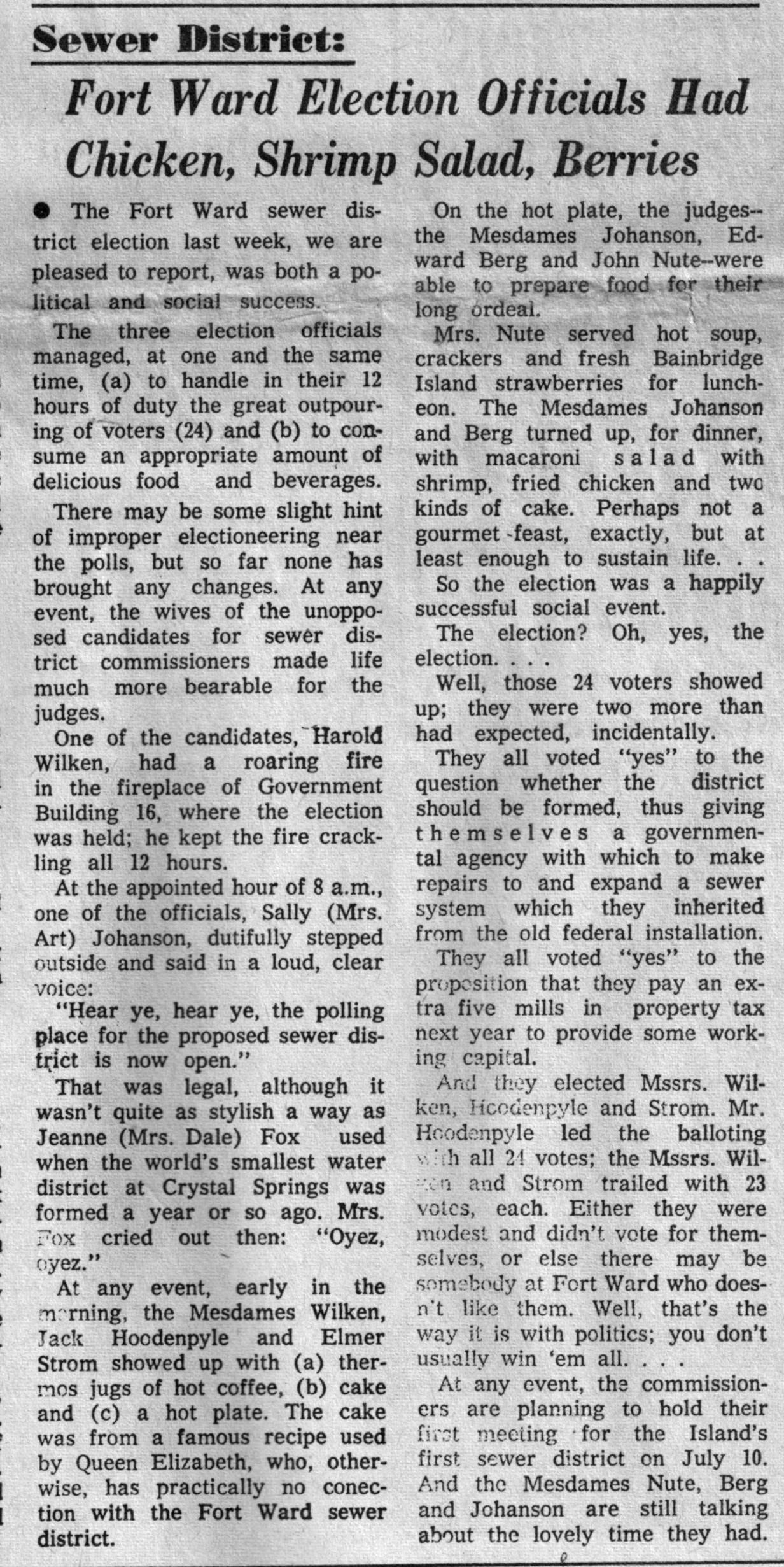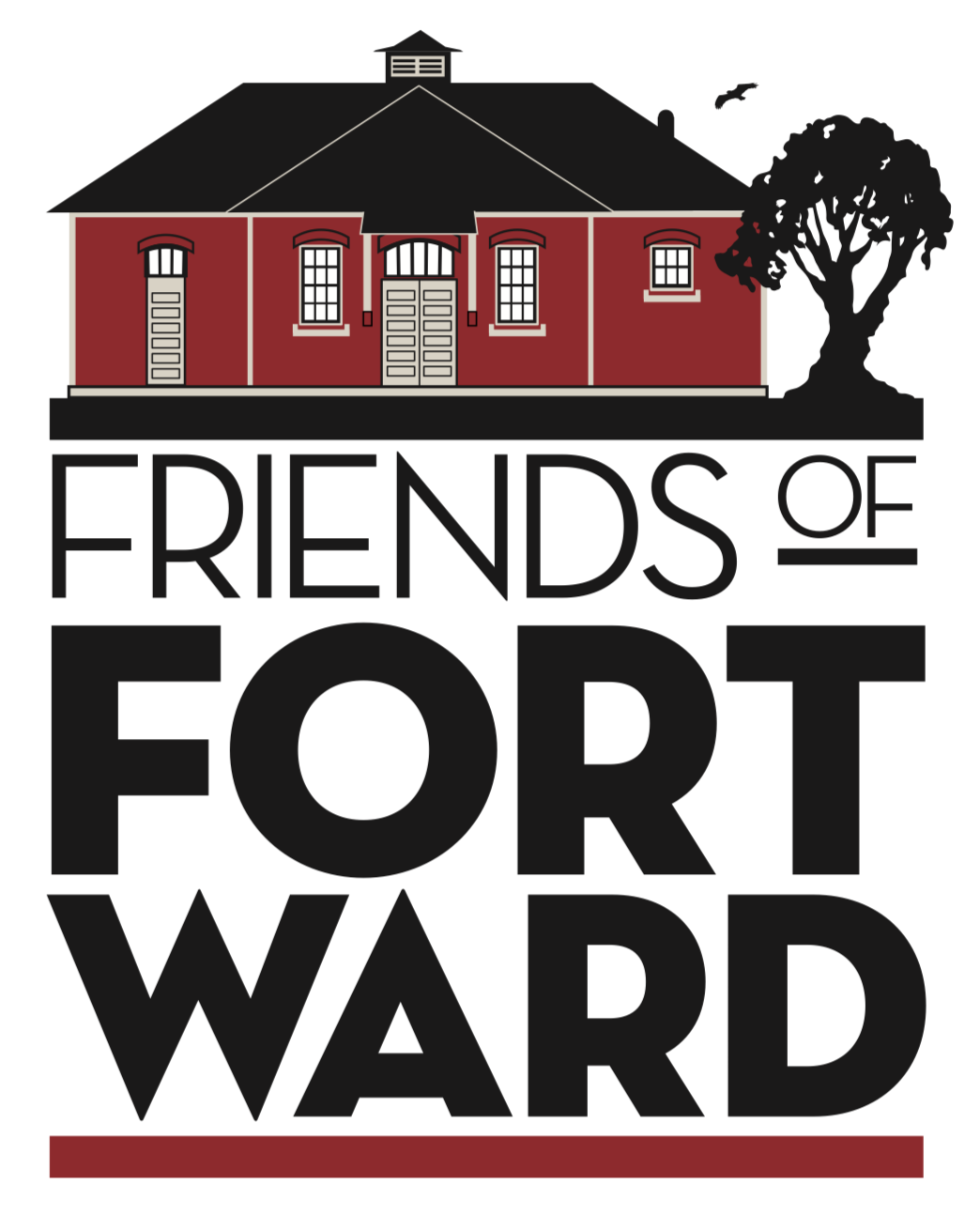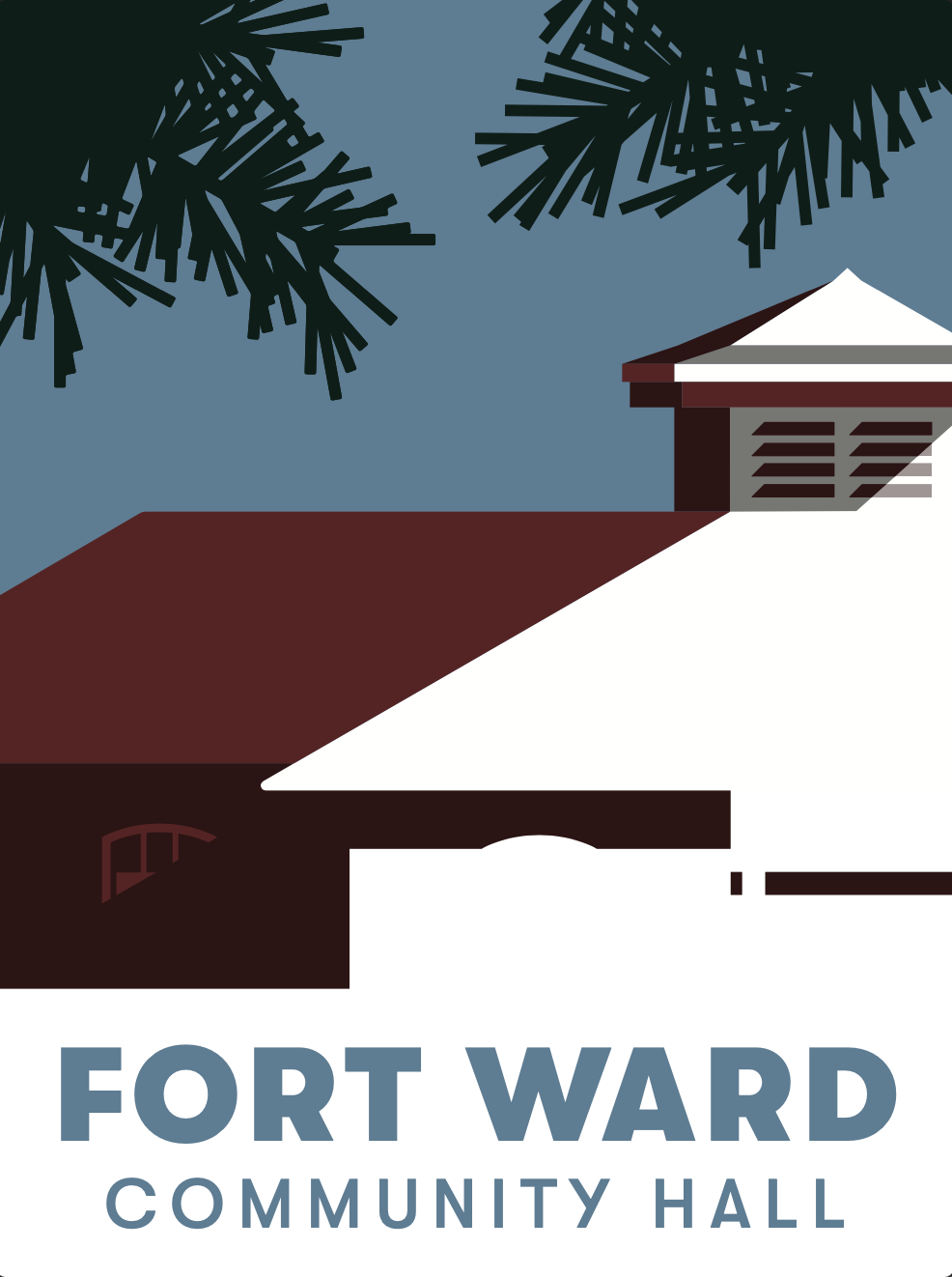Built around 1910 for roughly $17,000 and approx. 15,000 square feet in size, this building served as a storehouse for supplies for the Quartermaster Corps — that’s the branch of the Army that was responsible for the supply of food, clothing, fuel, and other items that kept the fort running.
A loading dock ran the length of the north side for bringing in supplies for the fort. Inside, a tracked hoist ran through building and could lower heavy supplies into the basement through a trap door.
The dormers (upper windows) were added to the building during World War II, to support the addition of barracks on the top floor — first for sailors, and then a contingent of WAVES – Women Accepted for Voluntary Emergency Service, the women’s branch of the Naval Reserve.
When a Fort Ward Sewer District was proposed in 1965, the neighborhood came to this building to cast their votes and enjoy refreshments, an exercise in neighborhood democracy. The Yes vote carried.
Floor plans, Quartermaster Commissary, Fort Ward. Source: National Archives
Echoes from Fort Ward history
FROM THE ARCHIVES: Bainbridge Island Review, June 1964
Fort Ward Election Officials Had Chicken, Shrimp Salad, Berries
(The Fort Ward sewer district is formed through a neighborhood vote and potluck, with Bldg. 16 as the official polling place)
The Fort Ward sewer district election last week, we are pleased to report, was both a political and social success.
The three election officials managed at one and the same time (a) to handle in their 12 hours of duty the great outpouring of voters (24) and (b) to consume an appropriate amount of delicious food and beverages.
There may be some slight hint of improper electioneering near the polls, but so far none has brought any changes. At any event, the wives of the unopposed candidates for the sewer district commissioners made life much more bearable for the judges.
One of the candidates, Harold Wilken, had a roaring fire in the fireplace of Government Building 16, where the election was held; he kept the fire crackling all 12 hours.
At the appointed hour of 8 a.m., one of the officials, Sally (Mrs. Art) Johnson, dutifully stepped outside and said in a loud, clear voice:
“Hear ye, hear ye, the polling place for the proposed sewer district is now open.”
That was legal, although it wasn’t quite as stylish a way as Jeanne (Mrs. Dale) Fox used when the world’s smallest water district at Crystal Springs was formed a year or so ago. Mrs. Fox cried out then, “Oyez, oyez.”
At any event, early in the morning, the Mesdames Wilken, ,Jack Hoodenpyle, and Elmer from showed up with (a) thermos jugs of hot coffee, (b) cake and (c) a hot plate. The cake was from a famous recipe used by Queen Elizabeth, who, otherwise, has practically no connection with the Fort Ward sewer district.
On the hot plate, the judges – the Mesdames Johnson, Edward Berg and John Nute – were able to prepare food for the long ordeal.
Mrs. Nute served hot soup, crackers and fresh Bainbridge Island strawberries for luncheon. The Mesdames Johnson and Berg turned up for dinner, with macaroni salad with shrimp, fried chicken and two kinds of cake. Perhaps not a gourmet feast, exactly, but at lest enough to sustain life …
So the election was a happily successful social event.
The election? Oh yes, the election…
Well, those 24 voters showed up; they were two more than had been expected, incidentally.
They all voted “yes” to the question whether the district should be formed, thus giving themselves a governmental agency with which to make repairs to and expand a sewer system which they inherited from the old federal installation.
They all voted “yes” to the proposition that they pay an extra five mills in property tax next year to provide some working capital.
And they elected Mssrs. Wilken, Hoodenpyle and Strom. Mr. Hoodenpyle led the balloting with all 24 votes; the Mssrs. Wilken, and Storm trailed with 23 votes each. Either they were modest and didn’t vote for themselves, or else there may be somebody at Fort Ward who doesn’t like them. Well, that’s the way it is with politics, you don’t usually win ’em all…
At any event, the commissioners are planning to hold their first meeting for the island’s first sewer district on July 10 And the Mesdames Nute, Berg and Johnson are still talking about the lovely time they had.”
– June 1964, Bainbridge Island Review

